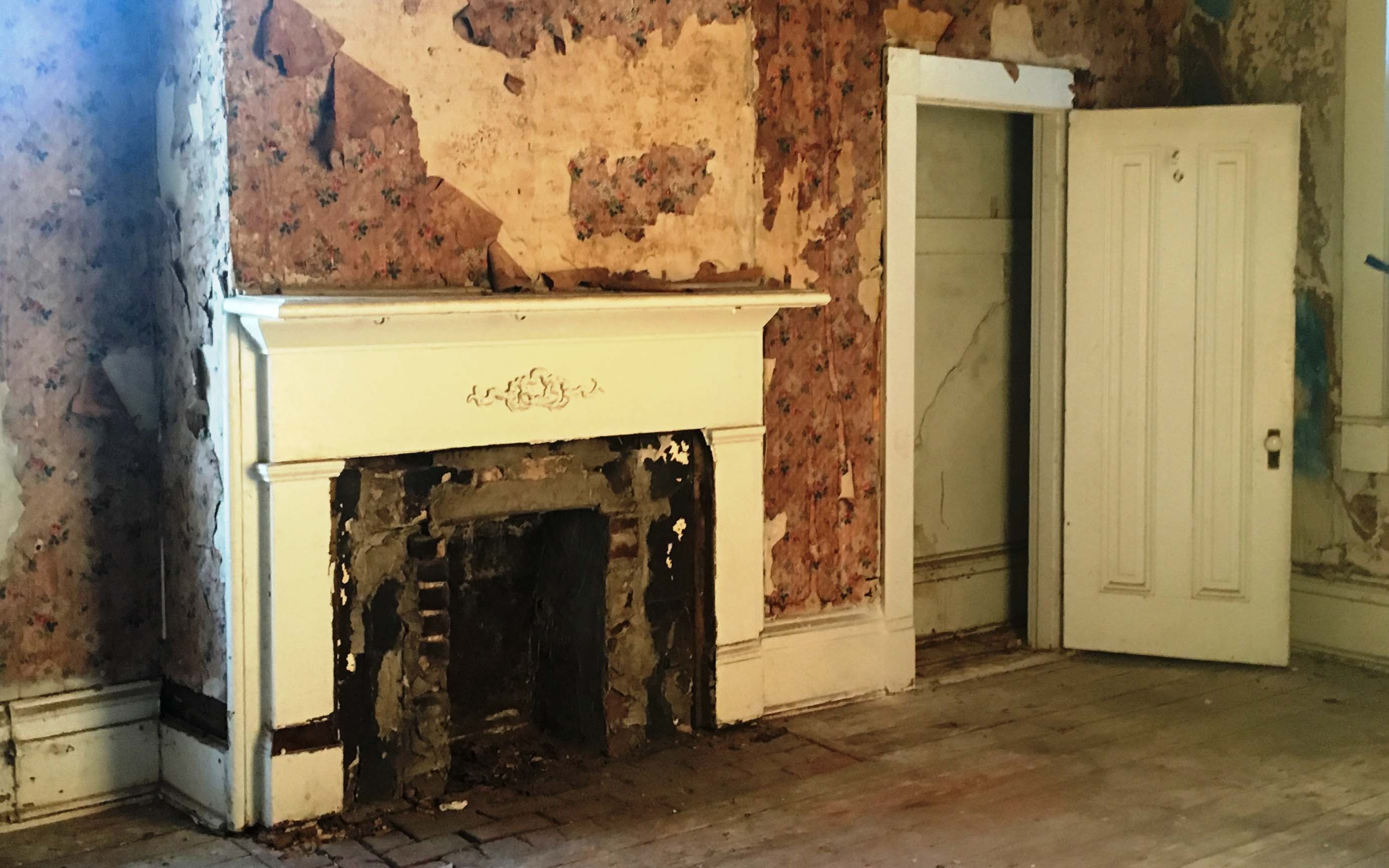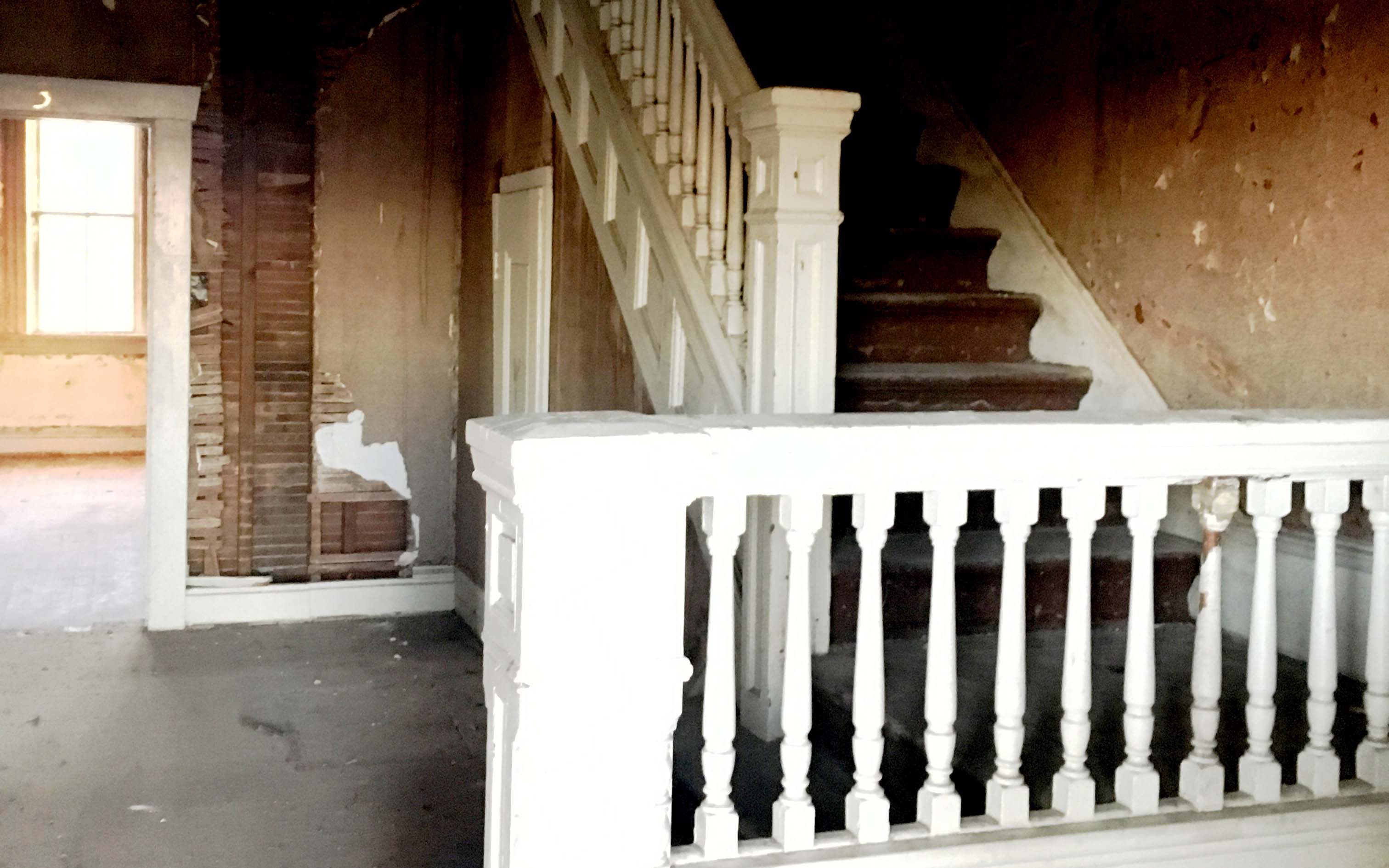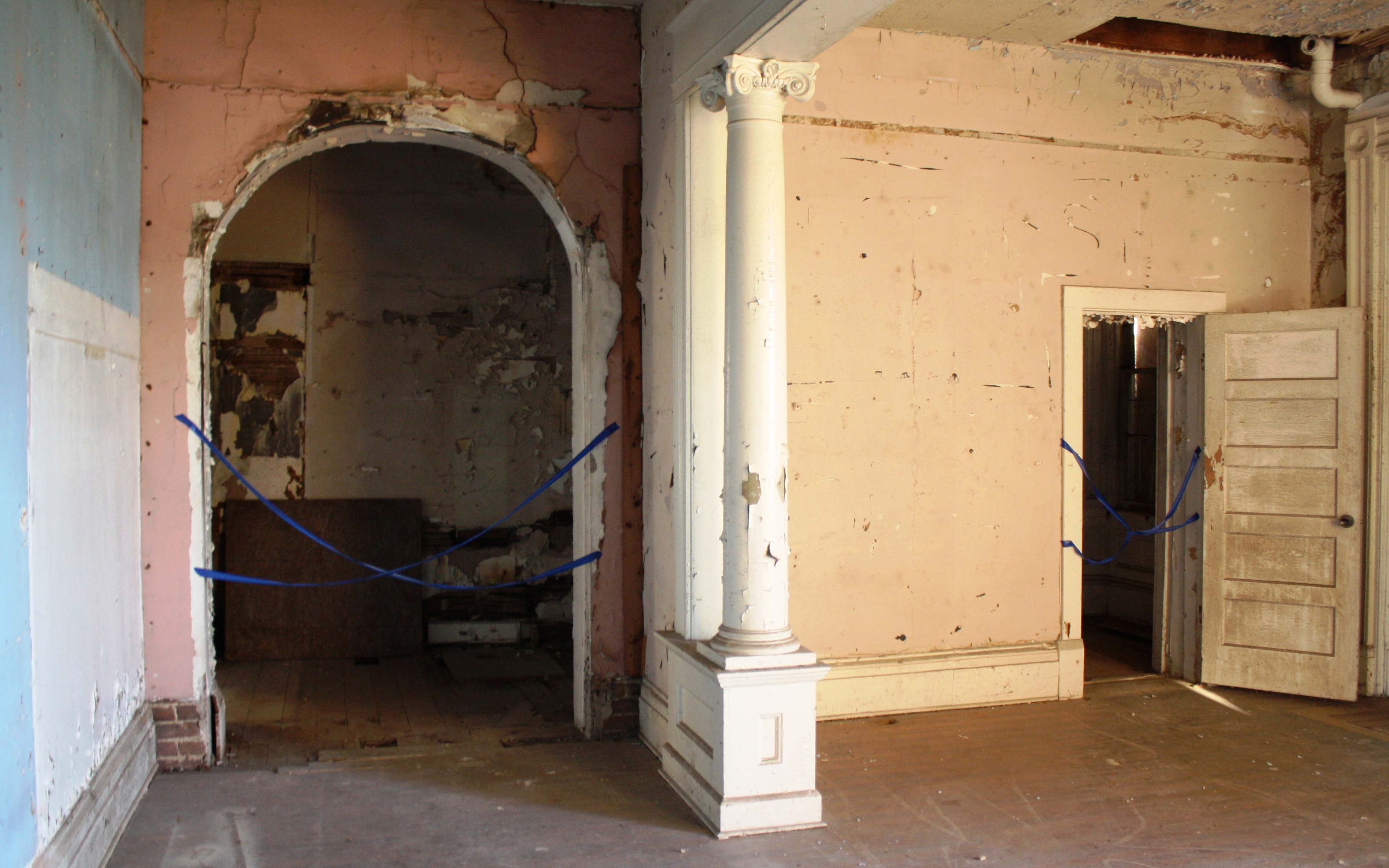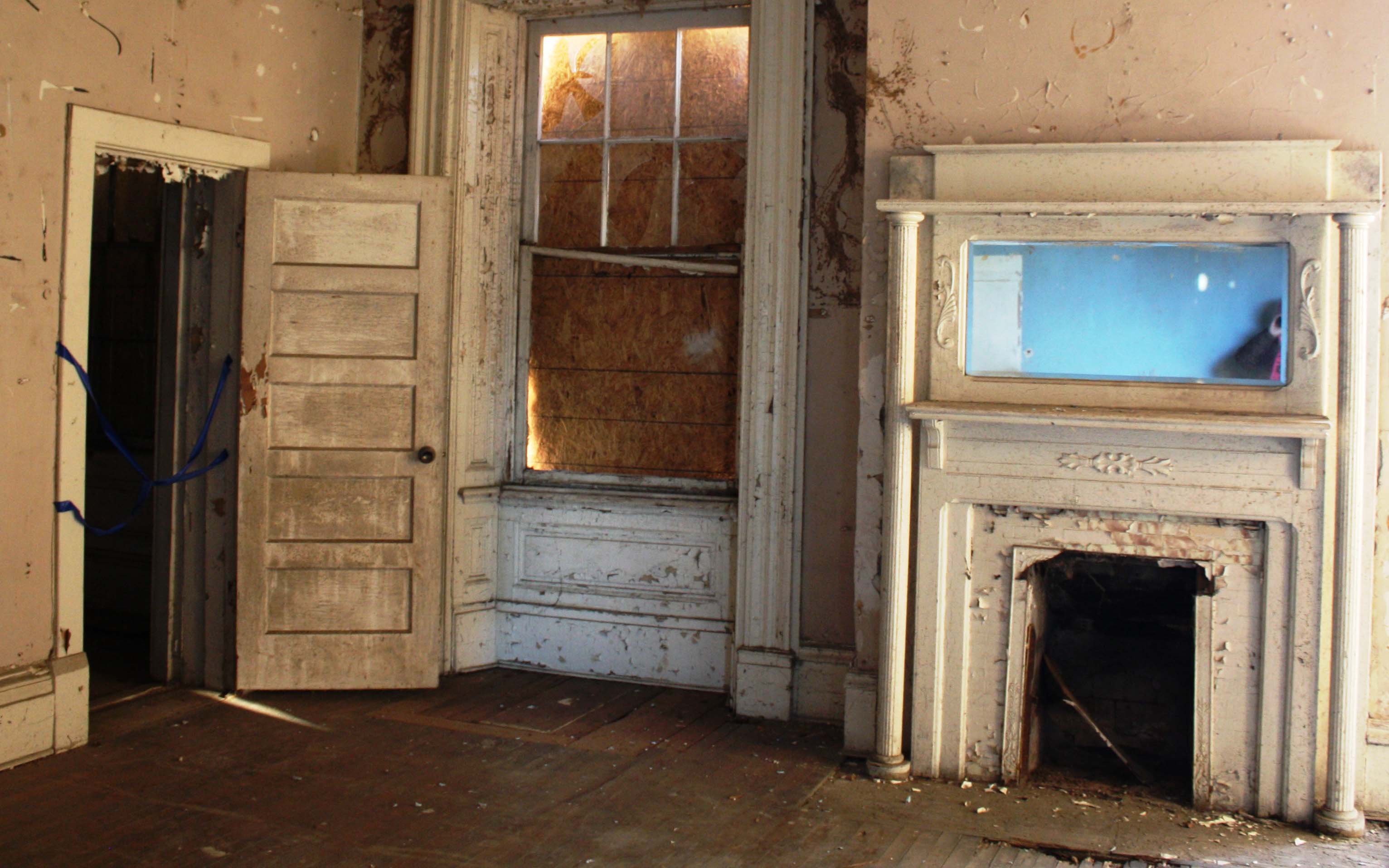Historic house spurs memories of Little Rock’s colorful past
May 6-12, 2019
By Jay Edwards
On the east side of Little Rock sits a large abandoned house, one with a history that dates to the decade before the Civil War.
In the early 1850s, Arkansas Gazette founder William E. Woodruff was looking for a new home with some land for his large family. He found 24 acres and contracted with a local builder named John Robins to construct a two-and-a-half story Greek Revival house with ten rooms. The cost was around $9,000.
Robins made his own bricks and it is likely that Woodruff’s 14 slaves were responsible for most of the labor on the large project. Besides the house, the property had quarters for those slaves, stables with livestock pens, a toolshed, carriage house and a laundry that was built on top of a brick cistern, which still sits on the property. There was also an orchard, gardens and beehives.
Woodruff and his wife, Jane Eliza (Mills), had seven daughters and four sons, and the large family moved into their new home on the farm in 1853. Woodruff’s own life had begun on a farm, on Christmas Eve in 1795, at Fire Place, New York on Long Island. His father Nathaniel died when William, the oldest of five boys, was 13. Soon after, his mother Hannah sent him off to apprentice under Alden Spooner for the Suffolk Gazette. This lasted until his 21st birthday, and for the next two years he moved around his home state as a journeyman printer, until one day setting his sights west and the fortunes that lay within.
After a brief stop in Louisville, and a little longer in Nashville, Woodruff looked to the newly created territory of Arkansas, and its capital at the Arkansas Post. His plan was to start a newspaper. He had already purchased a printing press, now he just needed a way to get it there. In those days the only way to get to the Post was over a bridle path. Even if he could have found teams of horses and men to rent, they wouldn’t have been able to pass through the swamps and forests. Steamboats hadn’t been introduced on the Arkansas River yet, so Woodruff purchased two dugout canoes and tied them together, and he and two other men finally arrived at the Post with the printer intact. It was Oct. 30, 1819, 21 days later, the first issue of the new Arkansas Gazette made its appearance. Woodruff did everything himself, setting type, presswork, editing, and sold subscriptions, $3.00 for a year in advance or $4.00 at the end of the year.
The frontier
In 1821 the territorial capital was moved to Little Rock, and Woodruff followed. This was the American frontier, where law enforcement was often a luxury. Woodruff was not a physically imposing man, yet he nonetheless wrote editorials with courage and conviction. One day a reader took exception to one of them and confronted Woodruff in his office with physical threats. Feeling like he was out of options, Woodruff shot and killed the man, in what was later deemed in a courtroom to be self-defense. He was acquitted and went back to his newspaper.
One of Woodruff’s closest friends was Chester Ashley, one of the territory’s most influential and powerful attorneys. Ashley had been one of the main players in the dispute over ownership of the land where Little Rock would be located. He represented, among others, Territorial Governor James Miller. On the opposing side were Henry Conway, Judge Andrew Scott and Robert Crittenden. Ashley’s side lost but after an agreement, the two sides ended up splitting the land.
A few years later, in 1828, a loyalist to Crittenden named John Garrett violently confronted Ashley on the street and the latter ducked into the Gazette building, where he found Woodruff. Garrett followed inside and fired a shot at Ashley. Woodruff grabbed the assailant just as Ashley returned fire, which hit Woodruff instead. But Garrett ran out with a mortal wound. No one was certain how he’d been shot. Woodruff speculated that Garrett must have had another gun in his pocket, which went off accidentally. As former president pro tempore of the U.S. Senate, Ambrose Sevier told Secretary of State Henry Clay, “Party Spirit among us has run high, and not infrequently have these political disputes ended in bloodshed.”
Indeed, gunplay was not uncommon in those days. A year earlier, Crittenden perceived some comments made by his old colleague, Henry Conway, as criticism. He challenged Conway to a duel, in which Conway was mortally wounded with the first shot, dying several days later.
The war
After Arkansas seceded from the Union in May of 1861, Woodruff volunteered for the Confederate Army at the age of 65. He fought in Missouri and then returned home, as the Union Army moved in. By fall of 1863 they controlled the city.
Woodruff wrote a letter to a friend that was intercepted by the Union Army, which led to his banishment from Little Rock by General Frederick Steele, who also confiscated Woodruff’s home. But Steele allowed Jane Eliza and her daughters to occupy two rooms in the house, until they could find shelter with friends. The house was used as a headquarters and hospital until the war ended in 1865, when Woodruff returned to his home.
In June of 1873, Woodruff divided his 25 acres into lots for the city of Little Rock, but he and Jane continued to live in the house. Throughout Reconstruction and until his death, he continued to have a hand in Little Rock politics. His son, William Jr., bought the Gazette in the summer of 1866.
William Woodruff Sr. died on June 19th, 1885 and was buried in Mt. Holly Cemetery in Little Rock. Jane Eliza died two years later.
The house
The home Woodruff built remained in the family under the care of their son Alden until 1891, when it was sold. By the early 1920s the semi-circular porch had been replaced by the rectangular porch that exists today. The interior of the home was redesigned as a multiple-residence space and specifically served to lodge single young women who came to Little Rock for work. It was called the “Cottage Home for Girls” and it was divided into twelve bedrooms, each of which could house multiple residents. Women who lived there were charged around $5.00 per week, which included two meals every day.
The home served the same purpose throughout the 1930s, but the name was changed to the “Colonial Club for Business Girls”. The building continued to serve as a family-owned boarding house until around 1980.
In 2013, the Quapaw Quarter Association, the Arkansas Historic Preservation Program, Preserve Arkansas, and the City of Little Rock all formed a consortium to determine how to fund the effort to save the house. Ultimately, in 2014, the QQA purchased the structure and the land around it. In 2015, the city of Little Rock put up the chain link fence and boarded up openings in order to further secure the house.
The Woodruff House has been listed on the National Register of Historic Places since March 21, 1989. Recent efforts have garnered new hope for preserving the structure, and with the revitalization of east Little Rock, principals are optimistic about the historic home’s future.
It is located at 1017 E. Eighth, St., a few blocks east of Interstate 30.
Sources: Arkansas Encyclopedia of History and Culture; Arkansas Historic Preservation Society: William E. Woodruff House by David Collins (July 2018); Arkansas, 1800–1860: Remote and Restless by S. Charles Bolton.
PHOTO CAPTIONS:
A historic home which predates the Civil War sits quietly on the east side of Little Rock. Built with a solid foundation, follow today’s cracks and crevices for the story underneath. (Photos courtesy of Ginger Beck, Abandoned Arkansas, emailed)







